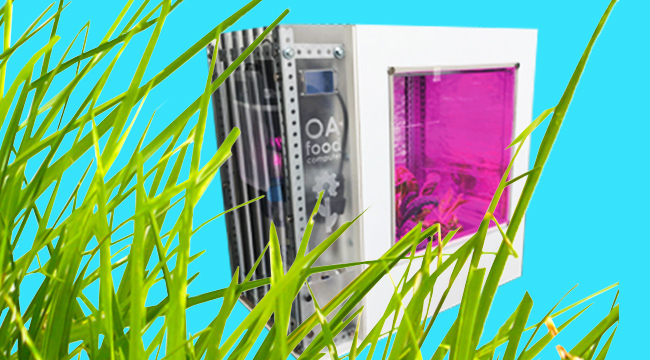
When was the last time you ate something you grew? For many of us, the answer might well be “never.” Farming, increasingly, is something that happens in distant states or even distant lands, with the results flown or trucked in for us to pick over. But how we eat is straining the environment, and as our demand to live in cities pushes their boundaries ever outward, cropland disappears, raising the distinct possibility of a food crisis.
Even properly managed farmland can only produce so much, underscoring the importance of a new initiative at the Massachusetts Institute of Technology. The goal: To use technology, robotics, and design to turn us all into farmers.
“There are so many issues with our food system in general, from the very beginning through distribution, to the consumer, even post-consumer, that we feel we’re losing touch with where our food comes from” Hildreth England, Assistant Director of MIT’s OpenAg project explains.
OpenAg is, as the team likes to describe it, a “Food Computer” — a sealed box not unlike a greenhouse, wired with water and nutrient distribution systems and sensors. Researchers download a specific “climate” for the computer to maintain for the crop they’d like to grow, and the computer automates the process, ensuring the plants get exactly the amount of water, food, and sunlight they’d receive in their home climates. It’s completely open source and publicly available. If you want to grow oranges in Alaska, it’s a matter of finding the right “recipe” in OpenAg’s database.
The goal, long-term, is to create vast hanging gardens on desks, on the floors of office buildings, and in anonymous warehouses, to put any type of produce we want on the table, and to make it as simple to do as possible. MIT doesn’t see every last one of us becoming a professional farmer, but rather that we each have our own small farm that we control with the push of a button. It’s a world where farming is like doing the laundry or the dishes, a simple and necessary task. “We’re losing touch with the idea that any of us could grow our own food,” England points out. But with OpenAg,”if you know nothing about plants, you can press a button and grow some things.”
That’s part of the reason MIT’s made it possible for anyone to build a Food Computer. The tabletop model’s plans, parts list, and code are freely available online, and the team is hoping people will experiment with as many different plants as possible, not just to grow them, but to figure out how to grow them in different ways. Already, they’ve managed to revive heirloom foods we thought were lost.
“We grew Aunt Molly’s Ground Cherries,” England says, referring to a varietal that hasn’t seen widespread cultivation in more than 150 years. “It was an old seed and they taste sort of like pineapples and tomatoes at the same time. A lot of folks who came in had never tasted anything like that before.”
Ground cherries are only the beginning. OpenAg has an agreement with both the Svaldbard Global Seed Vault and Seed Savers to experiment with and cultivate plants that just aren’t a part of our diet. One of the advantages of everyone being a farmer is that we can diversify how we eat.
Everyone being a farmer in the near future isn’t just a dream, though. It’s becoming more and more of a necessity as we run out of farming professionals. “A little less than 2% of the population is working in farming, and the average age of a farmer is 58,” England says. “The farmers of the future are going to be dealing with a completely different climate, and we’re losing the folks who know how to do it well,”
OpenAg’s goal is to make farming simple, and locate the farms in the places we live. That’s more important than you might think: Nearly a tenth of the greenhouse gases humanity produces comes from agriculture, which doesn’t include the gas we burn trucking and flying produce to grocery stores or keeping it preserved well enough to remain edible. Even establishing a steady source of produce within city limits would drastically reduce the environmental cost of growing plants.
In the end, though, OpenAg is about returning control of what we eat, down to the very leaf, to us.
“There’s an enormous amount of power in democratizing this information and democratizing climate, and what you choose to do with that is up to you.” England explains. “In our minds, you can grow whatever you want, but it’d be interesting to see what you can affect. Does that start with the seed, or is it only the climate? We don’t know what that is yet.”
As Open Ag becomes more widely accepted, it’s only a matter of time before we find out.
